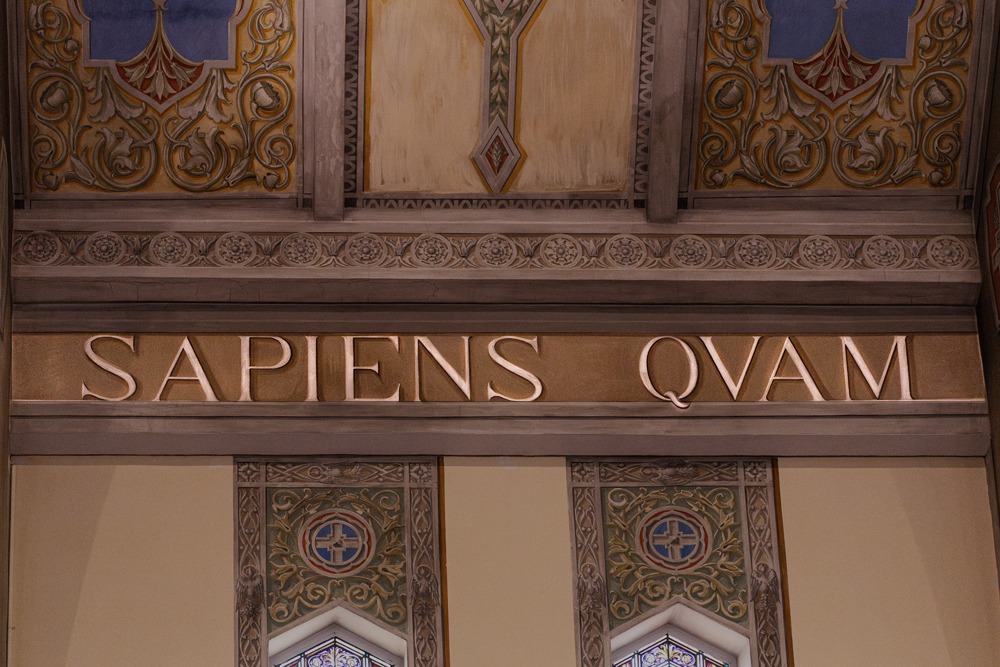
Sainte-Amélie in honour of Amy Irwin Adams
On the left side of the nave, you will see the words “Haec est virgo sapiens quand Fominus vigilantem invenit, quam acceptis lampdibus sumpsit oleum.” This means “Here is a wise virgin who, when the master comes unexpectedly, took along oil with her lamps.”
But what did Nincheri mean by that phrase?

Sainte-Amélie, the patron of the church, is associated with this quote because she was regarded as a wise virgin who prepared her soul to meet Jesus Christ. Born in the seventh (7th) century into a noble and wealthy family, she is said to have refused to marry a powerful man in order to withdraw from the world and devote herself to her Christian faith. Nincheri therefore chose to use a passage from the bible to represent the church’s patron saint.
But why would a 20th century church in Quebec bear the name of a little-known saint of the Middle Ages?
It should be noted that the church was initially supposed to be called Saint-Joseph. However, while it was being built, Amy Irwin Adams, Robert McCormick’s first wife, passed away suddenly. The founder of the city therefore wanted this new place of worship to be named in memory of his wife. As there isn’t a Saint Amy in the Christian directory, the closest name was chosen, that is to say Amélie.